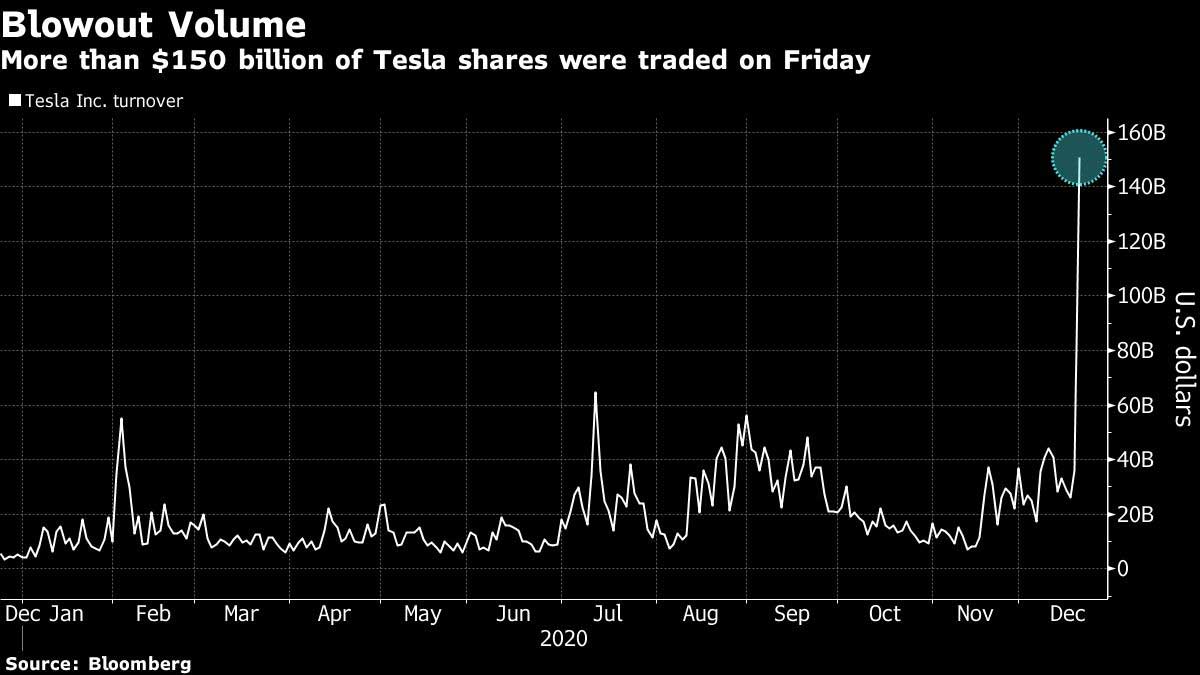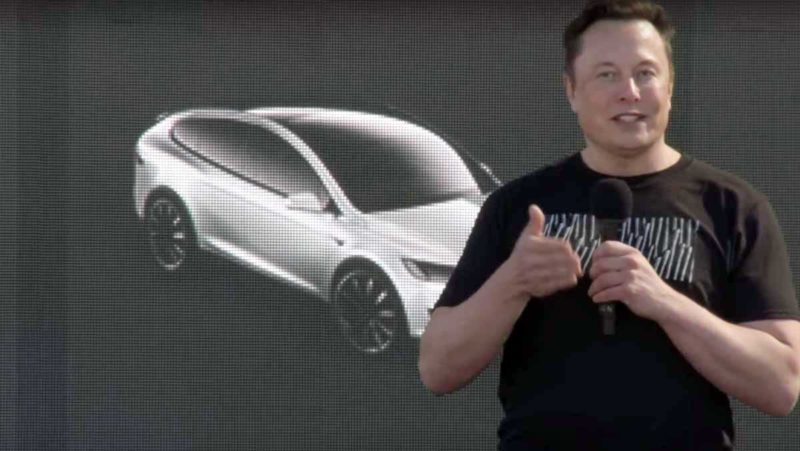Electric car maker and energy storage company Tesla is now part of the S&P500 index, joining the likes of tech giants Apple, Microsoft, Amazon, Facebook, and Alphabet as the fifth most valuable company in the index.
Tesla CEO and co-founder Elon Musk took the opportunity to thank supporters for making the company successful, saying: “Thanks to everyone who worked so hard to make Tesla successful. My heart goes out to you.”
Thanks to everyone who worked so hard to make Tesla successful. My heart goes out to you.
— Elon Musk (@elonmusk) December 21, 2020
The electric car maker has enjoyed a skyrocketing share price in 2020 despite the economic pressures placed by the Coronavirus pandemic. Share values soared 64% after the confirmation it would join the S&P500 index in November, and are up almost 700% since the start of the year.
However,a a post-inclusion slump in values has some asking, can Tesla continue on its meteoric trajectory?
Friday saw enthusiasm for Tesla trading at a high – and more than $US150 billion ($A198 billion) worth of shares were traded, Bloomberg reported, as investors clambered to claim a piece of the Tesla pie prior to its addition to the prestigious index.

But its stock values fell 6.5% after the actual inclusion in the S&P500 index on Monday, also as news of a rival Apple electric car came to light.
Tesla sits unchallenged on the electric car market throne, but there is uncertainty over whether its value is over-inflated.
Its profits are not in proportion to its stock values, analysts note.
“In fact, using the industry average P/E of about 15x [1], Tesla would have to post over 2x the profits of the top ten automakers combined to justify its valuation. For perspective, the top ten automakers by sales posted net profits of under $20 billion over the last 12 months,” Forbes wrote on Monday.
Bernstein analyst Toni Sacconaghi wrote in a note earlier this month that he does not expect Tesla shares will continue to rise in the near term, Bloomberg reported.
“There is strong precedence for positive returns for stocks prior to S&P 500 inclusion and post announcement, but very limited precedent for near term outperformance post inclusion,” Sacconaghi was quoted as saying.
But does this have any bearing on Tesla’s future?
While the recent Apple electric car news may yet prove to be another ripple in the historical pond of whispers that the tech giant will enter the electric and autonomous car market, legacy car makers are definitely ramping up efforts with huge investment in the transition to electric mobility.
However, Tesla’s continued success – over-valued or not – rests squarely on its ability to continue innovating, which is what it has done in droves since it entered the market with the Roadster in 2008.
It can’t be underlined enough that Tesla is not solely an automaker; it is a software technology and automotive design disruptor, and a renewable energy company as a list of its past achievements and future plans demonstrate.
- March 2008 – Began making Roadster
- June 2012 – Delivered first Model S
- May 2013 – Reported first quarterly profit
- September 2015 – Launched Model X
- June 2016 – Bought SolarCity
- June 2017 – Began delivering Model 3
- August 2018 – Announced it would make its own AI self-driving chip
- November 2019 – Unveiled Cybertruck and took 250,000 pre-orders within one week, opened first overseas Gigafactory in Shanghai
- March 2020 – Began delivering Model Y
- May 2020 – Tesla’s tabless battery patent published
- June 2020 – Breaks ground on Berlin Gigafactory, gains approval to use LFP battery in China
- July 2020 – Announces Cybertruck Gigafactory for Austin, Texas, posts fourth consecutive profit amid pandemic
- September 2020 – Revealed plans for 4680 battery manufacture, radically redesigned Model Y
- October 2020 – Rolls out Full-Self Driving beta software to small number of drivers
- November 2020 – Musk says Berlin Gigafactory will be biggest battery factory in world
- December 2020 – Joins S&P500
That’s just the first dozen years since its initial vehicle launch, and is a non-exhuastive list that doesn’t attempt to include software roll outs adding features, games and in some cases, increasing driving range to Tesla’s electric cars, or its footprint in stationary battery storage and rooftop solar.
Tesla’s plans for 2021 and beyond are equally ambitious. To start with, it will produce the Model Y in Berlin, and Shanghai, using giant casting machines.
By mid-2021, Tesla will start building the Cybertruck at its factory in Austin, Texas, and Musk has hinted that by 2023, there will be another, smaller, Tesla electric car that will cost $US25,000.
That’s not even including the wide release of Tesla’s Full-Self Driving software, the introduction of which may further increase uptake, particularly as it becomes available as a subscription product from early 2021, and which would provide Tesla with bigger profit margins.
It should be another fascinating year in 2021.

Bridie Schmidt is associate editor for The Driven, sister site of Renew Economy. She has been writing about electric vehicles since 2018, and has a keen interest in the role that zero-emissions transport has to play in sustainability. She has participated in podcasts such as Download This Show with Marc Fennell and Shirtloads of Science with Karl Kruszelnicki and is co-organiser of the Northern Rivers Electric Vehicle Forum. Bridie also owns a Tesla Model Y and has it available for hire on evee.com.au.


